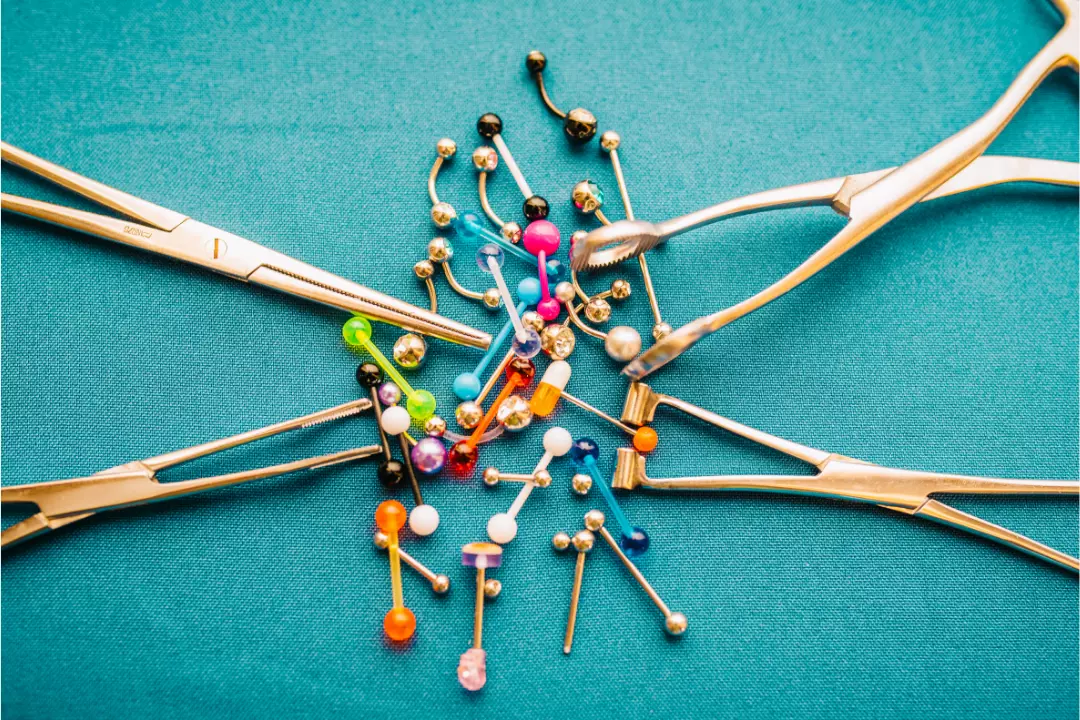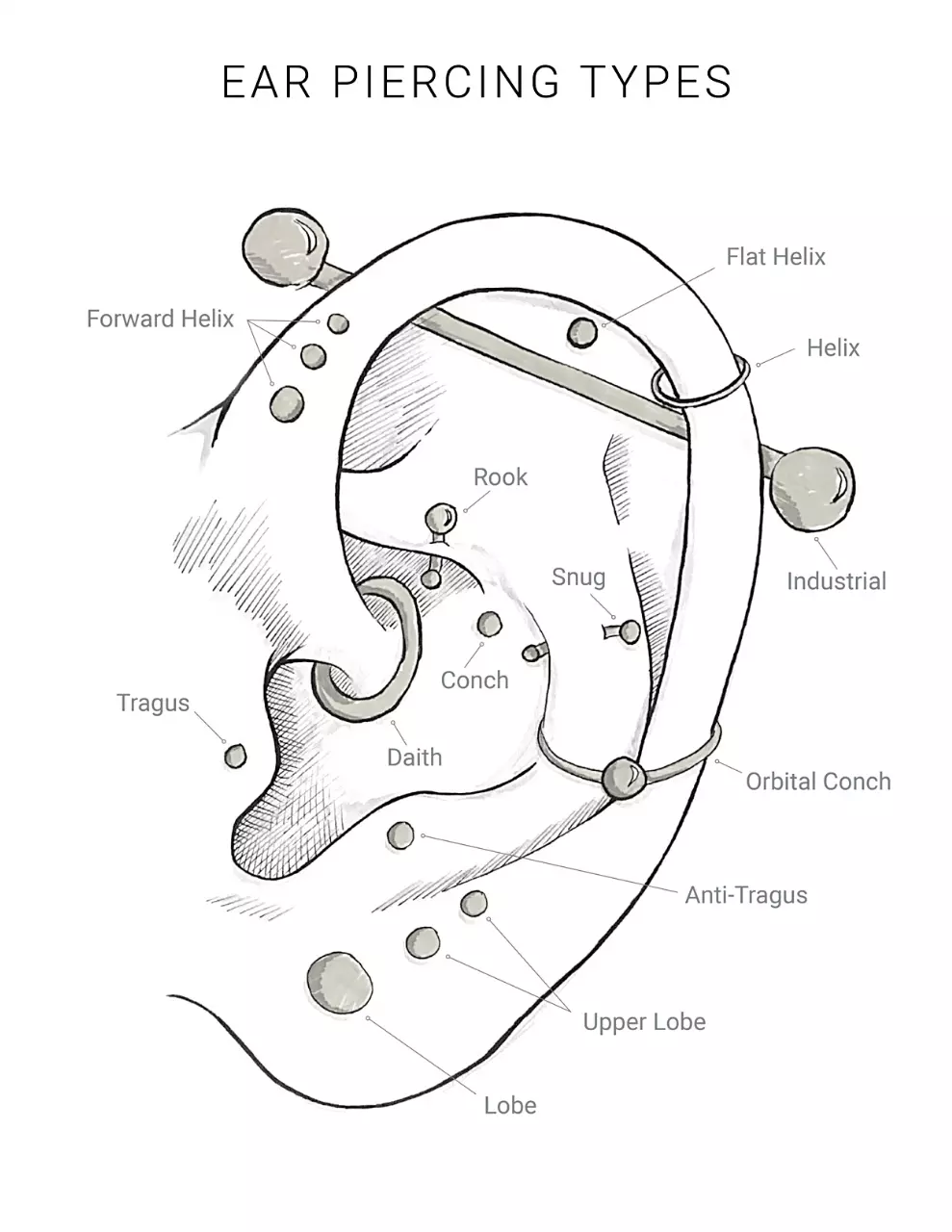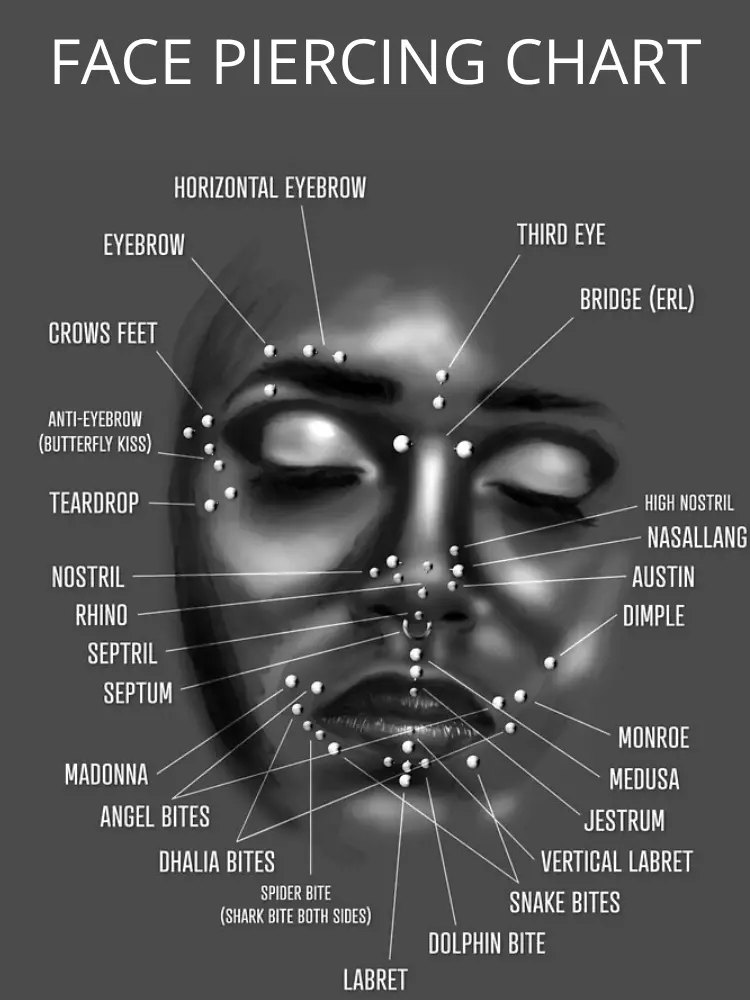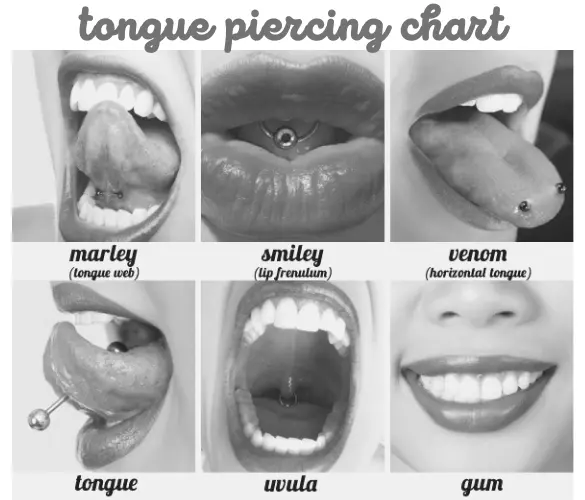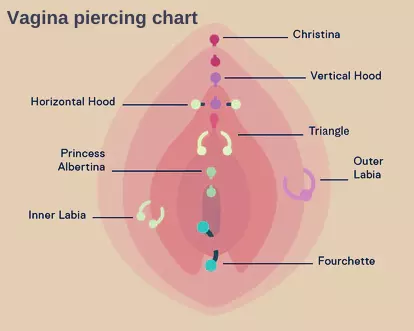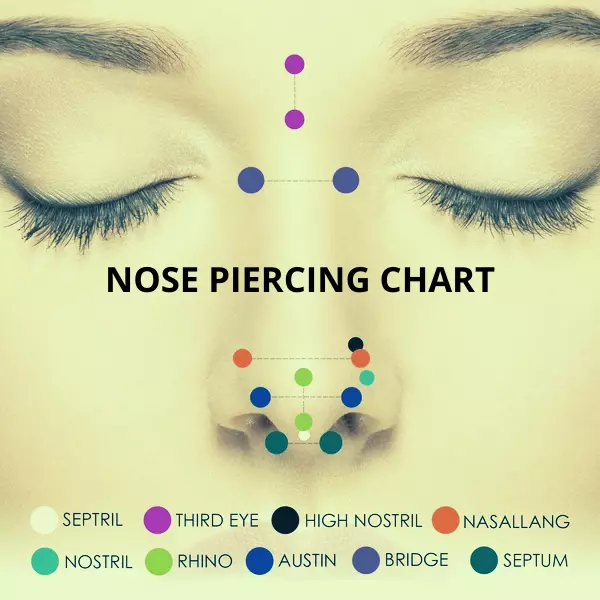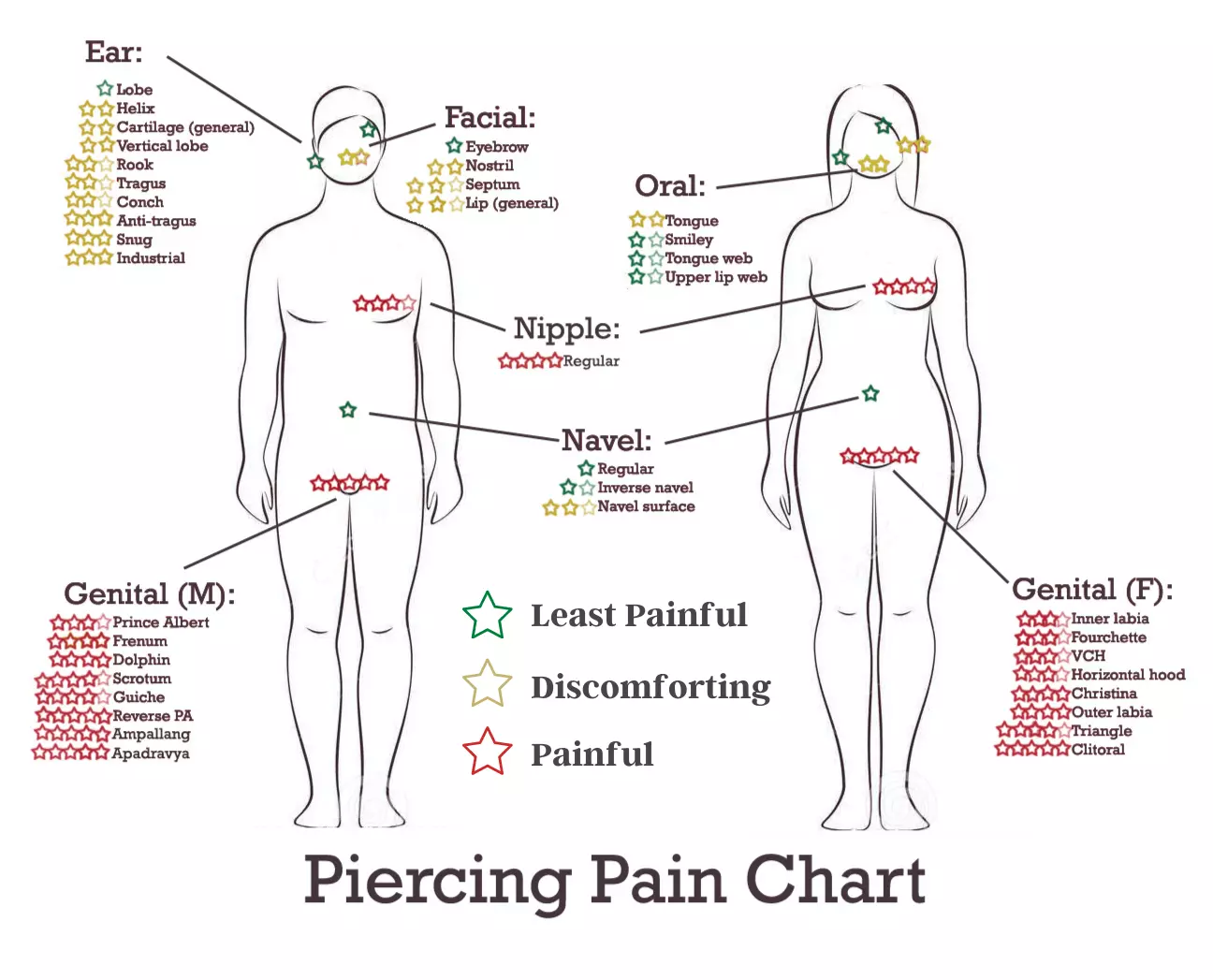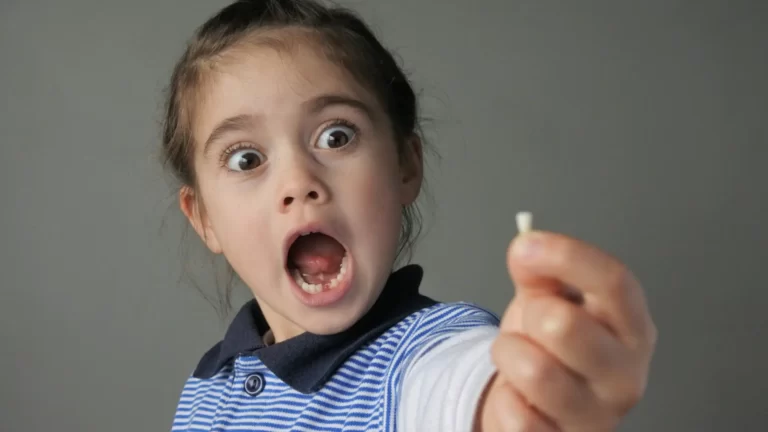What Piercings Can You Get At 16 Without Parental Consent?
Originally posted on 04/07/2023 @ 23:06
Piercings are a growing trend for both teens and adults. There are many different types of piercings, which can make it challenging to know what is appropriate or not for your child. This article will discuss all the various piercing types that are available, the current law status, as well as the risks involved with each one. We hope that this guide helps to answer any questions about how old you have to be to get a piercing without parental consent.
What piercings can you get at 16 without parental consent?
In most of the States in America only ear piercings can be performed on a minor without parental consent (ex.: Kansas). Some states allow a minor to be pierced, branded or even tattooed from the age of 16 only with a consent from the parent/guardian (ex.: Florida). In Idaho for instance minors are allowed to be pierced, branded or even tattooed from the age of 14.
At 16 years of age, minors can get the following piercings without parental consent in most of the United States of America:
- earlobes and all ear cartilage piercings
- nostril and septum piercings
- eyebrow piercings
- tongue and lip piercings, including labret, beauty mark & philtrum piercings navel piercings
Here we also have to mention that the piercing/tattoo studios reserve the right to decline to perform certain piercings or tattoos on minors if they feel it’s inappropriate. So be sure to check out the guidelines and pick out a piercing or tattoo idea in advance, to avoid complications.
In the US, every state has regulations regarding the legal age at which minors can pierce their body parts without parental consent.
There is no agreed-upon age in the United States when minors can have piercings without parental permission, although some jurisdictions have set it as low as 14 for ear piercings like Idaho.What is a piercing?
A piercing is a hole made in the body, typically by puncturing through an area of skin with a sharp object. Many different piercings can be done to various body parts, such as the ear lobe, eyebrow, and belly button.
What is involved?
Piercing usually involves three steps:
-First, the area is sterilized.
-Then, an insertion taper or needle is used to create the hole in your skin.
-Finally, jewellery is inserted into the opening and allowed to heal.
Many people are nervous about the pain of getting pierced, but it should not be too bad, provided you follow your piercers’ tips for aftercare.
Are there health concerns?
There are many different piercings, which means that you should know the risks involved with each piercing. One common risk would be infection if your wound were not adequately cleaned before it was pierced. Other issues can arise once the healing process begins, like keloids (raised scarring), allergies to jewelry, and even swelling around the piercing site.
From where does the piercing originate?
Many people have long regarded the human body as a blank canvas on which to paint and modify. This is true across several civilizations and periods. Piercing and tattooing have been prevalent in many cultures throughout the world.
The oldest known evidence of body piercing is a stone carving from Nimrud, Iraq, depicting a man with an ear-piercing. This was approximately the 9th century BC. The world’s oldest mummified body also had an ear piercing, which measured 7-11 millimeters in diameter. This body was verified to be at least 5000 years old.
Several civilizations have used piercings to identify with a particular tribe or clan, demonstrate social standing or position, improve attractiveness, seem fierce towards foes, and even symbolically represent a rite of passage.
There were several instances of naval piercings throughout ancient Egypt. It is claimed that the royal family wore gold rings through their navels to indicate their high social and economic status in this culture.
Women in the Aleutian Islands, for example, used to wear sea lion whiskers as earrings. This was seen as a sign of marrying a skilled hunter.
Warrior tribes in New Guinea and the Solomon Islands, for example, sported septum piercings. In these societies, warriors would wear tusks through their septums to make themselves appear more dangerous and frightening to opponents.
Regardless of the historical context, it’s worth noting that body piercing as a kind of body modification is nothing new. People who pierce their bodies today participate in a cultural phenomenon dating back to the 9th century BC.
This is a fantastic fact for anybody who feels uncomfortable or critical about body piercing to remember. Piercings have long had cultural and personal significance, and that will not change anytime soon.
How many types of piercings are there?
EAR PIERCINGS
Although the most well-known ear piercing is an earlobe piercing, there are several locations on the ear that you may pierce to show off your style. Below is a comprehensive list of various ear piercings so that you can pick the right one for you.
-
Antitragus Piercing – An antitragus piercing is a hole in the outer ear cartilage (opposite the earlobe) next to the ear canal. The healing time for an antitragus piercing may range from 8 to 16 months. Until it’s completely healed, don’t swap out your jewelry.
-
Auricle Piercing – A piercing in the auricle region of your ear. The auricle area of your ear is between the helix and the earlobe. This piercing might take three to nine months to heal fully, and it should be cleaned regularly.
-
Conch Piercing – Your conch piercing is located just in the middle of your ear, between your lobe and the top of your ear. There are two sorts of conch piercings: inner and exterior. The outer conch piercing is found in the flat part of the ear between the helix and antihelix, whereas the inner conch piercing is near the start of the ear canal.
-
Constellation Piercing – A cluster of ear piercings that resemble a galaxy constellation.
-
Daith Piercing – A piercing that goes through the innermost cartilage fold of the ear. A Daith piercing is typically a 14 gauge and has been utilized to treat migraines. This piercing might also be known as a “migraine piercing.”
-
Earlobe Piercing – The lobe of the ear (or ears) has a piercing. Earlobe piercings typically heal in 6-12 weeks and are generally done with a spring-loaded piercing gun, so the process is straightforward.
-
Forward Helix Piercing – The external edge of your ear, just above the tragus.
-
Helix Piercing – A hollow piercing needle is used to insert a stud into the upper ear cartilage. This is also known as cartilage piercing. For a double helix piercing, add two holes.
-
Industrial Piercing – The industrial piercing is a type of ear piercing in which two holes are pierced and linked with one single item of jewelry. This piercing, also known as scaffold piercing, bar piercing, or construction piercing, is placed vertically on the ear.
-
Orbital Piercing – A combination of two ear piercings connected by one piece of jewelry. Orbital piercings may be found on the helix, forward-helix, earlobe, and more.
-
Rook Piercing – An ear-piercing that penetrates through the top portion of the ear’s antihelix (or upper part). The antihelix is located above the tragus on the ridge between the inner and outer conch.
-
Snug Piercing – The inner ridge of the ear cartilage above the antitragus. This piercing goes all the way through the antihelix, but it’s toward the middle of the cartilage.
-
Tragus Piercing – The tragus is pierced through the cartilage in front of the ear canal opening.
-
Transverse Lobe Piercing – A horizontal piercing through the earlobe is similar to an earlobe piercing, except it runs horizontally instead of front to back.
FACE PIERCINGS
Nose piercings and face piercings are similar in that they provide a unique aesthetic to the wearer. There are many choices when it comes to face piercings, much like ear piercings. Although eyebrow piercings and lip piercings appear to be two of the most well-known in society, the list of alternatives is impressive as well:
-
Anti-Eyebrow Piercing (Cheekbone Piercing) – The top part of the earlobe is often pierced in this location. It’s placed above or below the brow. This piercing is a surface piercing, which may be vertical or horizontal, depending on the individual’s preference.
-
Ashley Piercing – A lower lip piercing that goes through the lip rather than the skin below it. These piercings are generally gauged to a 16 or a 14.
-
Bridge Piercing – A nasal piercing between the eyes, placed straight through the skin. A bridge piercing is also considered a surface piercing and has a greater chance of rejection and scarring.
-
Cheek Piercing – A dimple piercing, also known as a cheek piercing, is a type of facial piercings that penetrates the oral cavity. Cheek piercings, often known as dimple piercings, are generally done in pairs for symmetrical placement.
-
Eyebrow Piercing – A bottom-side piercing inserted via the brow and exiting out top. This surface piercing takes an average of six to eight weeks to heal.
-
Jestrum Piercing – A jestrum piercing, also known as a vertical medusa piercing, is an upper lip piercing positioned in the center of the top lip between the septum and nose.
-
Labret Piercing – A labret piercing is any piercing on the lower lip, whether it’s located at the bottom labrum (lip), in the center of the bottom lip just above the chin, or a “tongue pillar piercing” or a “soul patch piercing.” Multiple labret piercings can give you snake bite piercings, shark bite piercings, and spider bite piercings, depending on how many holes you have.
-
Madonna Piercing – The Madonna piercing is on the right side of the upper lip. A Madonna piercing is a beauty mark that looks like that of singer Madonna.
-
Monroe Piercing – A Monroe piercing is placed on the left side of the upper lip. This piercing, like Marilyn Monroe’s distinctive beauty mark, resembles a Marilyn Monroe piercing.
-
Philtrum Piercing (Medusa Piercing) – A philtrum piercing, like a jestrum piercing, has one hole through the middle of the upper lip. This may also be known as a Medusa piercing.
TONGUE PIERCINGS
Earrings aren’t the only kind of body jewelry available, as evidenced by this list. We’ll go through a very distinctive and fashionable form of internal piercing. It’s time to learn about all types of tongue piercings, as well as aftercare and recovery procedures and everything you need to know about them. With so many lovely tongue piercings to choose from, it’s time for you to learn about each one:
-
Lip Frenulum Piercing (Smiley Piercing)– A piercing through the upper lip frenulum. Your lip frenulum is located on the underside of your upper lip.
-
Lip Frenulum Piercing (Frowny Piercing) – A piercing through the lower lip frenulum. This is the piece of skin that connects your bottom lip to your mouth.
-
Tongue Piercing – A vertical piercing through the center of the tongue.
-
Uvula Piercing – A piercing through the uvula.
-
Web Piercing (Gum piercing, Tongue Frenulum Piercing)– This piercing is located under the tongue. The piercing goes directly through the “webbed” skin flap and is usually pierced with a curved barbell.
-
Horizontal Tongue Piercing (Snake Eyes Piercing, Venom Piercing) is a horizontal piercing through the tongue. A horizontal tongue piercing can be located at the tip of the language (snake eyes) and make its way toward the center of the tongue (venom) based on the individual’s preference.
VAGINA PIERCINGS
- Christina Piercing – A Christina piercing, also known as a Venus piercing, is placed vertically through the pubic mound and above the clitoral hood. This piercing is obtainable based on your anatomy.
- Clitoral Hood Piercing (VCH piercing) – A piercing through the hood of the clitoris. This piercing can be done vertically or horizontally.
- Clitoris Piercing (Clit Piercing) – A vertical or horizontal piercing through the clitoris.
- Fourchette Piercing – A piercing through the flap of skin at the back of the vulva.
- Isabella Piercing – A piercing through the deep clitoral shaft starting below the clitoris and ending just above the urethra.
- Labia Piercing – A labia piercing can be located on either side of your vaginal “lips.” You can get multiple labia piercings on either side of your vagina.
- Nefertiti Piercing – A piercing that starts at the pubic mound and ends above the clitoris.
- Princess Albertina Piercing – A vertical piercing that runs from the urethra to the vaginal opening.
- Triangle Piercing – This vaginal piercing runs horizontally beneath the base of the clitoral hood tissue, meeting the inner labia underneath the clitoris.
NOSE PIERCINGS
It’s critical to understand the difference between a nostril piercing and a septum piercing. We’ll explain both below so you can make an informed decision.
- Austin Bar – This piercing runs horizontally through the tip of the nose.
- Prince albert piercing – male genital Prince Albert piercings are the ones which pass through the urethra and out of the glans. It was popularized by its namesake, Prince Albert (1819-1861), who reportedly had his pierced to allow for easier urination while wearing tight Victorian trousers. A “deep” or “high” PA passes through the urethra and exits near the corona (the ridge of the glans), while a “low” or “loyalty” PA is shorter, passing only through the urethra.
- High Nostril Piercing – Similar to a nostril piercing, this piercing is located on the higher end of the nasal bridge.
- Multiple Nostril Piercing – A mixture of average and high nostril piercings create various holes on the nasal bridge.
- Nasallang Piercing – This piercing runs through both nostrils and the septum.
- Nostril Piercing – A piercing through the center of either nostril. Typically a nostril piercing is between an 18 gauge and a 20 gauge. By perforating two holes into your nostril, you can achieve a double nose piercing.
- Rhino Piercing – A vertical piercing that runs through the tip of your nose and exits through the skin above your septum.
- Septum Piercing – Also known as a bull piercing, a septum piercing runs through the cartilaginous wall that divides both nostrils. A septum piercing doesn’t usually go through the actual cartilage inside your nose but more so through the skin that separates the cartilage and the nostril openings.
- Septril Piercing – This piercing requires a stretched septum mixture of a rhino piercing and a septum piercing.
OTHER BODY PIERCINGS
Several piercings fall into the category of body piercings, ranging from anal piercings to micro dermal piercings. Belly button piercings, nipple piercings, and sternum piercings are just a few of the body modifications available.
- Anal Piercing – A piercing located around the anus, usually located on the perineum. The perineum is located between the anus and the scrotum or vulva.
- Back Piercing – A surface-piercing typically located on the lower back. Usually, these piercings are done in pairs to obtain symmetry and are sometimes referred to as “back dimple piercings.”
- Belly Button Piercing – Belly button piercings run vertically through the top or bottom of the belly button.
- Hip Piercing – A surface piercing located near the hip bones.
- Microdermal Piercing (Dermal Piercing)– A surface piercing that lies on any flat surface of the body. A microdermal piercing requires an anchor that is installed under the skin. Some popular dermal piercings include hip piercings, sternum piercings (chest piercing or cleavage piercing), corset piercings, wrist piercings, collarbone piercings, and more.
- Nape Piercing – A nape piercing is a surface piercing that runs through the back of the neck.
- Nipple Piercing – A piercing through the nipple(s).
- Sternum Piercing – A surface piercing located in the center of your chest. A sternum piercing is a microdermal piercing.
- Tooth Piercing – A piercing directly through your tooth.
- Wrist Piercing – A surface piercing on the inner or outer section of the wrist.
Do Piercings Hurt?
Piercings, for the most part, have a sensation of being pinched. Pain tolerance and piercing site are two factors that influence this. Because they are fleshy, ear lobe piercings are low-pain. Areas with more rigid cartilage, such as a string, are somewhat more painful. Nonetheless, it lasts only seconds.
It isn’t much you can do if you have a poor pain threshold. However, you may select a piercing site with minor discomfort. This is also an excellent idea for your first piercing since you won’t know how sensitive your skin is until after the fact. It is pretty easy to get lost in the process of getting a piercing and completely forget how much pain it causes.
The ideal time for a piercing is when body temperature is highest, which means in the morning or the afternoon after a hot shower. In any case, you ought to abstain from going for a piercing when your resistance is low or when you are feeling anxious or stressed out.
There are a few things you can use to numb the pain, depending of the pain level you are experiencing and the location of it:
Check out this piercing pain chart to see which piercings hurt the most.
How to Give a Written Parental Consent?
Written permission is required in certain jurisdictions for body art, which helps to prevent fraud. You don’t want your teenager to compose their own note (or have a pal do it for them) and enter a store claiming that their parents gave approval.
In some circumstances, consent forms must be notarized to ensure that the legal guardians are the ones signing them.
If you are giving written consent, you may need to document exactly what you are consenting to. For example, you may need to say what tattoo you consent your teen to get and where you are allowing your teen to get it. For piercings, you may need to document the type and location of the piercing.
If you are consenting to anything in writing, you will most likely need to record exactly what you are agreeing to. For example, if you agree that your teenager may get a tattoo at this location, you’ll need to state where and how the tattoo will be placed on your teen’s body.
If you’re ready to give written consent, there is no reason why you can’t do it yourself. Here is a online Tattoo & Body Piercing Consent Form, where you can select your state and most of the legalities will be automatically generated for you or a ready made consent form as .PDF to download for your convenience.
If you are not going to be there, contact the business ahead of time to discuss what your youngster will need in order to get a tattoo or piercing and find out all the formalities as well. Some states require the presence one or both parents, or legal guardians, so it’s not that easy as may sound.
Piercing ID Requirements for Minors
Who needs identification in order to be tattooed or pierced?
Any person regardless of age must bring valid (not expired) state-issued photo identification in order to get any kind of body modification done. If you’re the parent or legal guardian, you must be present and provide a copy of your valid photo ID. You cannot use a copy of a photo ID. Your birth certificate and guardianship papers must also be brought in at the same time as the piercing.
Accepted forms of ID’s for tattoos or piercings
Minors needs a valid government issued document showing their date of birth, along with a photo ID. Also, they need a valid ID from the parents/guardians, along with a valid non expired ID from them. All documents must be originals or certified copies of the originals.
Identification requirements for piercing or tattooing minors
Minors need parental consent before getting a tattoo or piercing. Parents and guardians should accompany minors during the procedure. State issued IDs are required. School-issued IDs aren’t accepted. Copies of birth certificates are necessary if parents’ names differ from those of the minor.A minor must be accompanied by a legal guardian if she/he is going to participate in any activity requiring parental consent. The legal guardian must provide a copy of the guardianships documents and a copy of their child’s birth certificate.
Tip of the day
Find out more about relationships, parenting and family culture in these related articles below
- sibling relationships
- step sibling rivalry
- healthy family culture
- parenting styles
- relationship trust issues
- enmeshed parenting
People Also Ask:
Which piercings are the most popular?
Here are the top 5 most popular piercings according to consumer reports
- Daith Piercings
- Ear Cuffs Around the Inner Conch
- Dainty Nose Studs
- Tragus Piercings
- Double Helix
Can You Get A Piercing At 16 Without Parental Consent?
YES! At 16 years of age, minors can get the following piercings without parental consent:
- earlobes and all ear cartilage piercings
- nostril and septum piercings
- eyebrow piercings
- tongue and lip piercings, including labret, beauty mark & philtrum piercings navel piercings
Can I Get A Septum Piercing At 16 Without Parental Consent?
Yes, because a Septum Piercing involves piercing the nose what is not considered a body piercing, so usually most states permit ear and nose piercings for under aged citizens.
What are the risks associated with piercings?
The risk associated with piercings is primarily infection. Piercing a tissue, that is meant to be solid, causes the foreign object being pierced to break open and expose the raw flesh underneath. For this reason, germs from dirt and dust have easy access into your body now through the piercing hole. These germs can cause an infection which can affect the entire area around your piercing. This, in turn, can spread to other parts of the body and cause systemic infections.
Some people who get infected with germs from their piercings will experience rashes around the area; others experience high fever and chills; some may even develop abscesses near or around their piercing. If you see any of these symptoms after getting a piercing, it is best to seek medical attention immediately.
Are piercing bumps normal?
Unfortunately, cartilage piercings are prone to developing bumps. They may develop soon after your initial piercing or many months later. It’s possible that you have a pustule, which is a blister or pimple with pus. A pustule is often the result of an infection, but it could also be due to irritation.
Scabs are another type of bump that can form at your piercing site. Scabs in cartilage piercings generally fall in the same category as bumps in other types of piercings-they’re usually a sign of irritation or improper healing.
Can piercing shops change jewelry?
For a fee, most serious piercing shops will exchange your jewelry. Keep in mind, though, that the majority will not put in jewelry they did not sell you. If you don’t want to perform the task yourself, your piercer will be delighted to do it for you for an extra charge.
Can piercings close overnight?
Only one night is too little time for the ear lobe to close, they can close pretty fast, but not that fast, so you are advised not to remove your piercings at all for the first 6 weeks. Newly pierced body parts (less than 6 weeks) need to be left alone to heal and not get infected, afterwards the holes will stay forever if not surgically sowed back together.
What piercing hurts the most?
Genital piercings and nipple piercings tend to have a lot of nerv endings so they hurt more than other piercings. The pain can be bearable with the use of anesthetics but the problem is that the nerve endings are numbed for a short time after which they come back to normal and it becomes painful again. This cycle lasts from 3-4 days until the piercing heals fully.
What piercing hurts the least?
Probably the Ear Piercing. The pain you feel during this procedure can really depend on the type of jewelry that is used for the hole. What’s more is that the size and shape of each person’s outer ear differs, which means that it may not even be painful to some people!
What piercing helps with migraines?
A Daith piercing, like a conch piercing, is placed in the smallest fold of cartilage in your ear, just above the ear canal. It’s also common for people who suffer from migraines to have piercings on both sides or just on the side where the pain is worst.
What jewelry piercers recommend?
Jewelry for initial piercings should be made of material that will not react with the body causing rashes or infection, for example:
- implant grade stainless steel and titanium,
- gold (14K or higher)
- platinum
- inert plastics like Tygon
- PTFE Teflon
Is Pagoda good quality?
Piercing Pogada has been manufacturing jewelry for over 60 years now, operating under the parent company Signet Jewellers. Recently rebranding itself as Banter by Piercing Pagoda currently selling 10-14k Gold and Sterling Silver jewelry.
Conclusion
Piercing has become a popular trend for those of all ages. Whether you want to get your first piercing or add to an existing collection, it is important that you know what risks and restrictions may apply before committing. We hope this guide answered any questions you might have had about what piercings can you get at 16 without parental consent.

